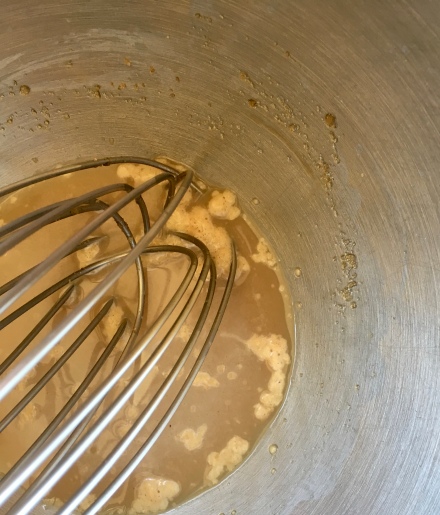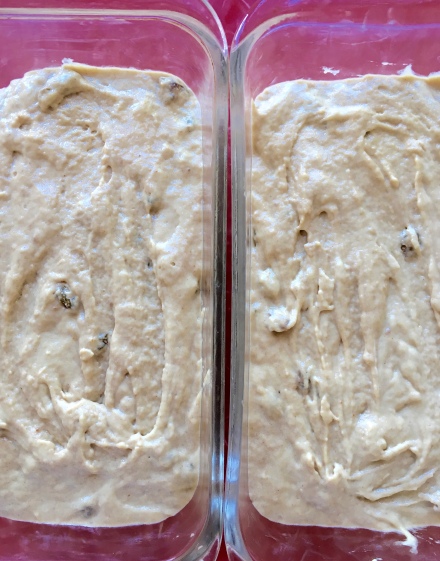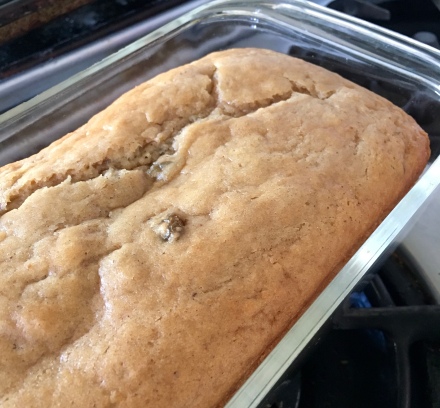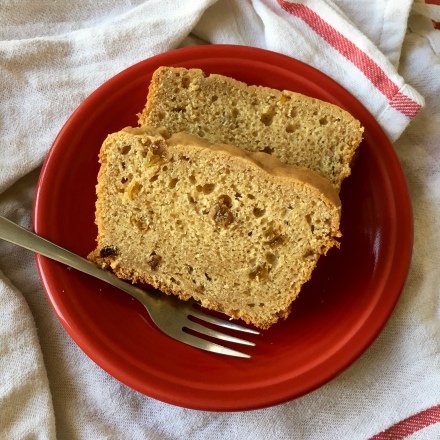
“Do you think more people would vote if they got free cake?”
We’d been talking about Election Cake. It had been an interesting conversation so far — one that meandered from voting requirements to Presidential eligibility to citizenship, and finally, to the Obama birther kerfuffle. So many questions from the kids. Whew. But let me back up…
We were making a cake. Or was it a bread? And what did it have to do with the political process?
I had kicked off our class that day by explaining that all the cookbooks in early America had been wholly British, that is, they contained recipes that employed traditional British cooking techniques using ingredients common to Britain. It wasn’t until 1796 that the first truly American cookbook was printed. Published in Hartford, Connecticut, by Amelia Simmons, American Cookery, or the art of dressing viands, fish, poultry, and vegetables, and the best modes of making pastes, puffs, pies, tarts, puddings, custards, and preserves, and all kinds of cakes, from the imperial plum to plain cake: Adapted to this country, and all grades of life, was the original manual for cooking American dishes using foodstuffs indigenous to the young country. It was hugely popular, and public demand kept it in reprints for 35 years. It was in the second edition of the book that there appeared what some food historians consider the first recipe for an Election Cake:
“Thirty quarts of flour, 10 pound butter, 14 pound sugar, 12 pound raisins, 3 doz eggs, one pint wine, one quart brandy, 4 ounces cinnamon, 4 ounces fine coriander seed, 3 ounces ground allspice; wet flour with milk to the consistency of bread over night, adding one quart yeast; the next morning work the butter and sugar together for half an hour, which will render the cake much lighter and whiter; when it has rise light work in every other ingredient except the plumbs, which work in when going into the oven.”
—American Cookery, Amelia Simmons, facsimile of the Second Edition, printed in Albany, 1796
I imagine that recipe would have produced enough cake for a whole town! Or perhaps an army?
In fact, the Election Cake is thought to be a variation of a Mustering Cake. Before the Revolutionary War, colonists would gather for military training exercises or “mustering.” The women would bake simple cakes to serve to the crowd of hungry men. After the revolution, mustering was no longer necessary but men still traveled to the town center to vote. Election Day was treated much like a holiday, with an abundance of revelry and celebration, so the Muster Cakes were fancied up a bit and evolved into Election Cakes.
“We need to get going on the sponge.”
“A sponge?!”
I reminded them that we had used the same process for the brioche we had baked in one of our last sessions.
“Oh yeah.”
I also reminded them that in 1796 baking powder would not yet have been introduced, (that happened in 1843). The one chemical leaven that was in use and included in American Cookery was pearl ash, an undependable and bitter-tasting product derived from wood ashes that tended to leave ghoulish green streaks in baked goods. Thus the need for a yeasty sponge leaven.
As commercial yeast would not have been available until the 1860s, the yeast mentioned in the original Election Cake recipe would have meant barm, the foam or scum created when brewing ale.
“Ooh so they used pilsner in their cake?!”
Since we weren’t brewing any ale, we would use commercial yeast for this cake.





When the kids had finished mixing the sponge, we set it aside to ferment. In the meantime, we gathered the rest of the ingredients together, buttered the baking dishes, and chatted some more about cooking in 18th century America.
“So, this cake is a celebration cake, but it seems pretty plain. Any idea why?”
I let them consider that for a moment before pointing out that baking in those times was kind of a pain.
“Just getting the ingredients together was more difficult. You couldn’t just scoop sugar out of a jar. Some books still included instructions on ‘How to boyle and clarify sugar.’ And in the late 1800s, white sugar was expensive, used sparingly, and had to be scraped from loaves or cones with special shears.”
Then, there was the manner of cooking. In colonial American kitchens, baking was done in small brick ovens built alongside the fireplace. By the 1840s to 1850s, brick-oven baking had been supplanted by the cast-iron wood-burning range, but cooking in one was still labor intensive:
Too much care cannot be given to the preparation of the oven, which is oftener too hot than too cool…A good plan is to fill the stove with hard wood…let it burn until there is a good body of heat, and then turn the damper so as to throw the heat to the bottom of the oven…In this way a steady heat to start with is secured…if the hand can be held in from twenty to thirty-five seconds…it is a “quick” oven, from thirty-five to forty-five seconds is “moderate,” and from forty-five to sixty seconds is “slow”… All systematic housekeepers will hail the day when some enterprising Yankee or Buckeye girl shall invent a stove or range with a thermometer attached to the oven, so that the heat may be regulated accurately…
— The Women of First Congregational Church Marysville, Ohio The Centennial Buckeye Cook Book Minneapolis, 1876
By now, we could see that our sponge had fermented and was well-risen.


While we added the sponge into a mixture of creamed butter and sugar, we discussed the various sugar products that were available and how they were produced.

The grating of nutmeg prompted a completely unscientific sniff-test comparing it to mace.

“It’s important to mix your fruit with flour so it doesn’t all sink to the bottom of your cake.”



We finished mixing the batter, and set the cakes aside to rise a second time.


“It looks like banana bread!”

I was unsure how tasty the cakes would be, but the kids loved them. The recipe says they keep well and are delicious sliced and toasted, but I haven’t tested that because they’ve been gobbled up each time.
If you do make this recipe you might consider making extra — depending on which way you’re leaning this election cycle you could either throw a party on election night or drown your sorrows in cake. Either way, get out and vote.

Election Cake, adapted only slightly from Classic Home Desserts by Richard Sax
Makes two 8×4-inch loaves; each serves about 8
For the sponge:
1 package active dry yeast
1/2 c packed light brown sugar
1 1/2 c lukewarm milk
3 cups all-purpose flour
For the cake:
3/4 c (1 1/2 sticks) unsalted butter, at room temperature
3/4 c packed light brown sugar
2 large eggs
1/2 c all-purpose flour
1 1/2 t ground cinnamon
3/4 t fresh-grated nutmeg
1/2 t ground mace
3/4 t fine sea salt
1 c golden raisins
3 T brandy
Dissolve the yeast and 2 T of the brown sugar in 1/4 c of the lukewarm milk; let stand until bubbly, about 10 minutes. Stir in the remaining 1/4 c plus 2 T brown sugar and the remaining 1 1/4 c milk; gradually add the flour and knead in a standing mixer with a dough hook for five minutes. (You could also do this by hand with a wooden spoon). Scoop into a buttered bowl, cover, and let rise until doubled in volume, 45-60 minutes.
In a bowl, combine the flour with all of the spices, the salt, and the raisins, tossing them to coat.
In a large bowl or the bowl of a stand mixer, cream the butter and brown sugar until light. Beat in the eggs, one at a time. Punch down the sponge and add to the butter mixture; beat just until partially combined.
Add the flour mixture to the dough, along with the brandy, and beat until well combined; the dough will be very soft.
Generously butter the loaf pans. Divide the dough evenly between the two pans, cover and let rise in a warm place until fully doubled, about 45 minutes. Meanwhile, preheat the oven to 350 degrees F.
Bake until the loaves are golden brown, about 45 minutes. A toothpick inserted in the center will come out clean.
Cool the cakes in the pans on a rack for about 15 minutes. When cool enough to handle invert the cakes onto the rack, unmold and turn right side up. Cool to room temperature. Wrapped well, the cakes will keep several days.
More in this series:
Chocolate Cake For a Devil, Hold the Sauerkraut
So interesting! I love all the tidbits of information you include and I also love that kids are more inclined to enjoy something they’ve had a hand in creating.
Thanks Kari! They are definitely more interested, and the conversation as we are working is so good. It was fun.
Pingback: Cake As A Lens | She Cooks With Kids
Pingback: The Redemption of a Sad Paste | She Cooks With Kids
Pingback: Chocolate and Elbow Grease | She Cooks With Kids
Pingback: Best Laid Plans | She Cooks With Kids
Pingback: Fit For Angels | She Cooks With Kids
Pingback: Chocolate Cake for a Devil, Hold the Sauerkraut | She Cooks With Kids
Pingback: A Cup is a Cup is a Cup | She Cooks With Kids